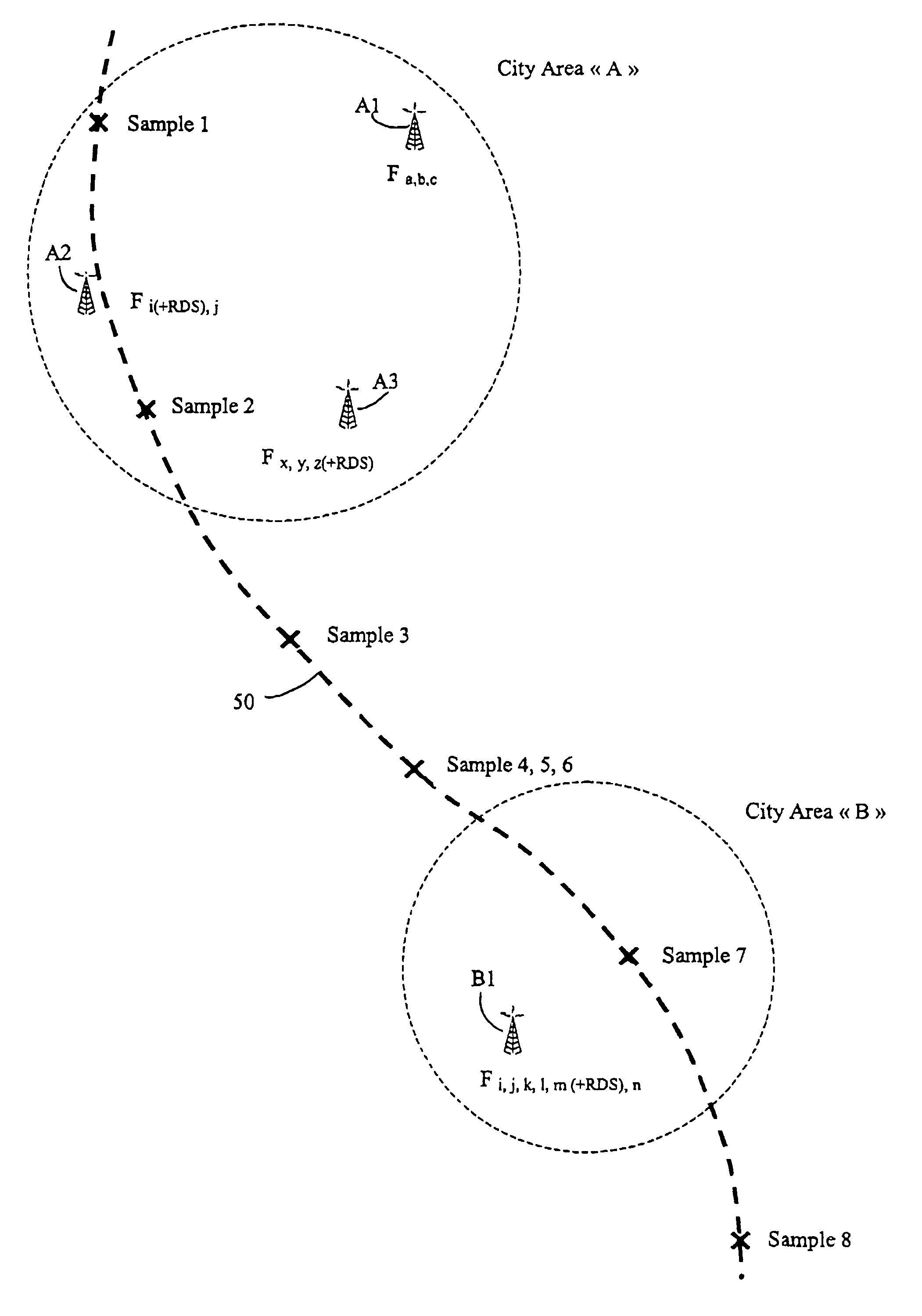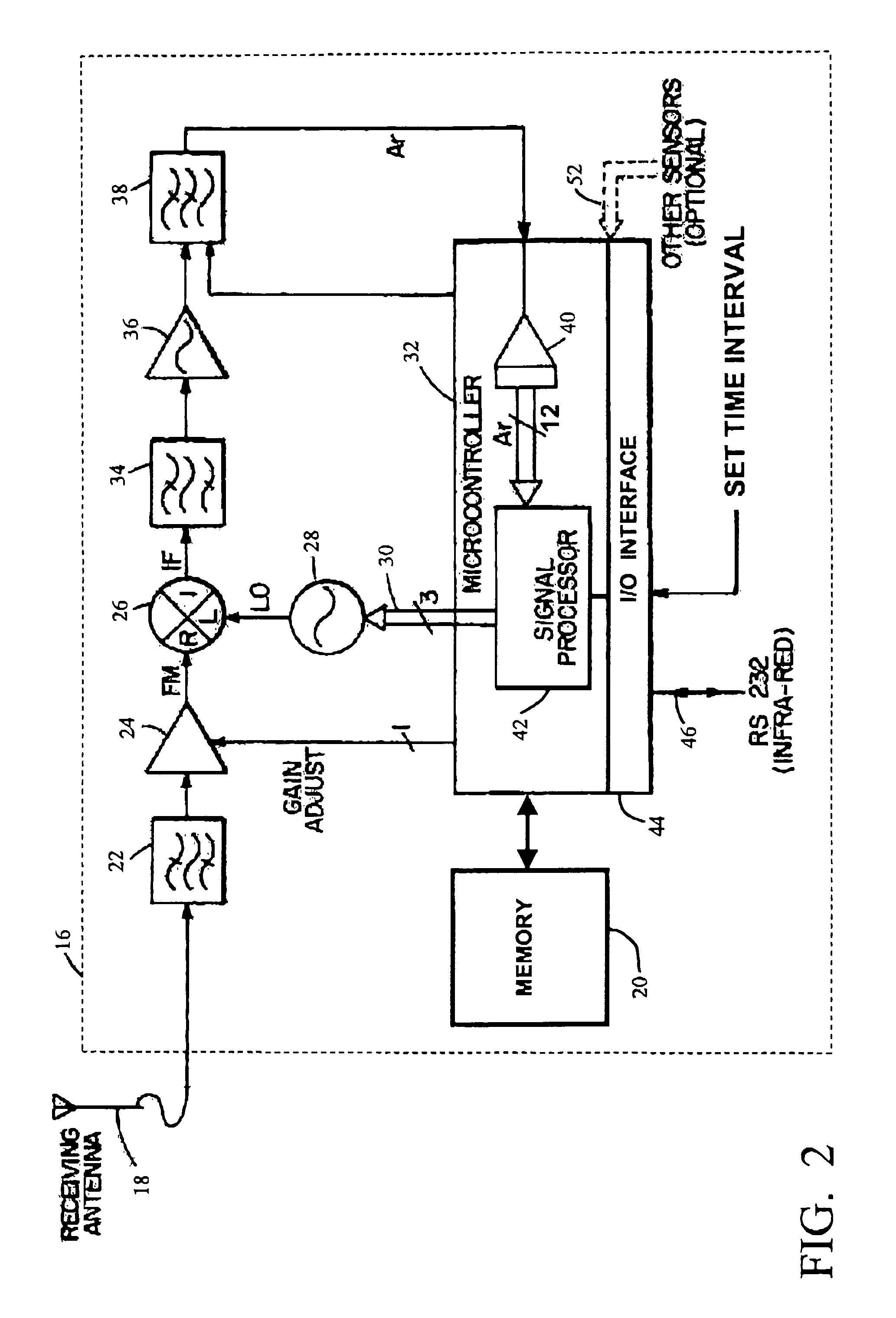Apparatus and method for tracing a path travelled by an entity or object, and tag for use therewith
a technology of entity or object and path, applied in direction finders using radio waves, instruments, reradiation, etc., can solve the problems of inability to covert operation, require line-of-sight, and large receiver circuitry, so as to reduce mis-correlation to negligible levels, enhance the determination of the tag location, and improve the determination of the geographical area
- Summary
- Abstract
- Description
- Claims
- Application Information
AI Technical Summary
Benefits of technology
Problems solved by technology
Method used
Image
Examples
Embodiment Construction
[0063]The present invention is predicated upon the fact that, typically, within a specific geographical area, a radio receiver will receive a wide range of man-made radio frequency (RF) signals including the broadcast commercial (AM radio, FM radio, TV, etc.) signals and private (communication, cellular, satellite, etc.) signals. Such RF signals form a frequency spectrum or RF signature that is unique to that specific geographical area. Databases are available that contain geographical locations (latitude, longitude) of transmission antennas associated with the frequencies of the signals transmitted from each such transmission antenna. Consequently, it is possible to construct a RE spectrum for a particular geographical area by identifying all of the antennas in the area and combining their transmission frequencies as provided by the database.
[0064]Such a database is owned by RadioSoft Corporation, of Demorest, Ga. 30535, USA and accessible to subscribers via the Internet. Embodimen...
PUM
 Login to View More
Login to View More Abstract
Description
Claims
Application Information
 Login to View More
Login to View More - R&D
- Intellectual Property
- Life Sciences
- Materials
- Tech Scout
- Unparalleled Data Quality
- Higher Quality Content
- 60% Fewer Hallucinations
Browse by: Latest US Patents, China's latest patents, Technical Efficacy Thesaurus, Application Domain, Technology Topic, Popular Technical Reports.
© 2025 PatSnap. All rights reserved.Legal|Privacy policy|Modern Slavery Act Transparency Statement|Sitemap|About US| Contact US: help@patsnap.com



